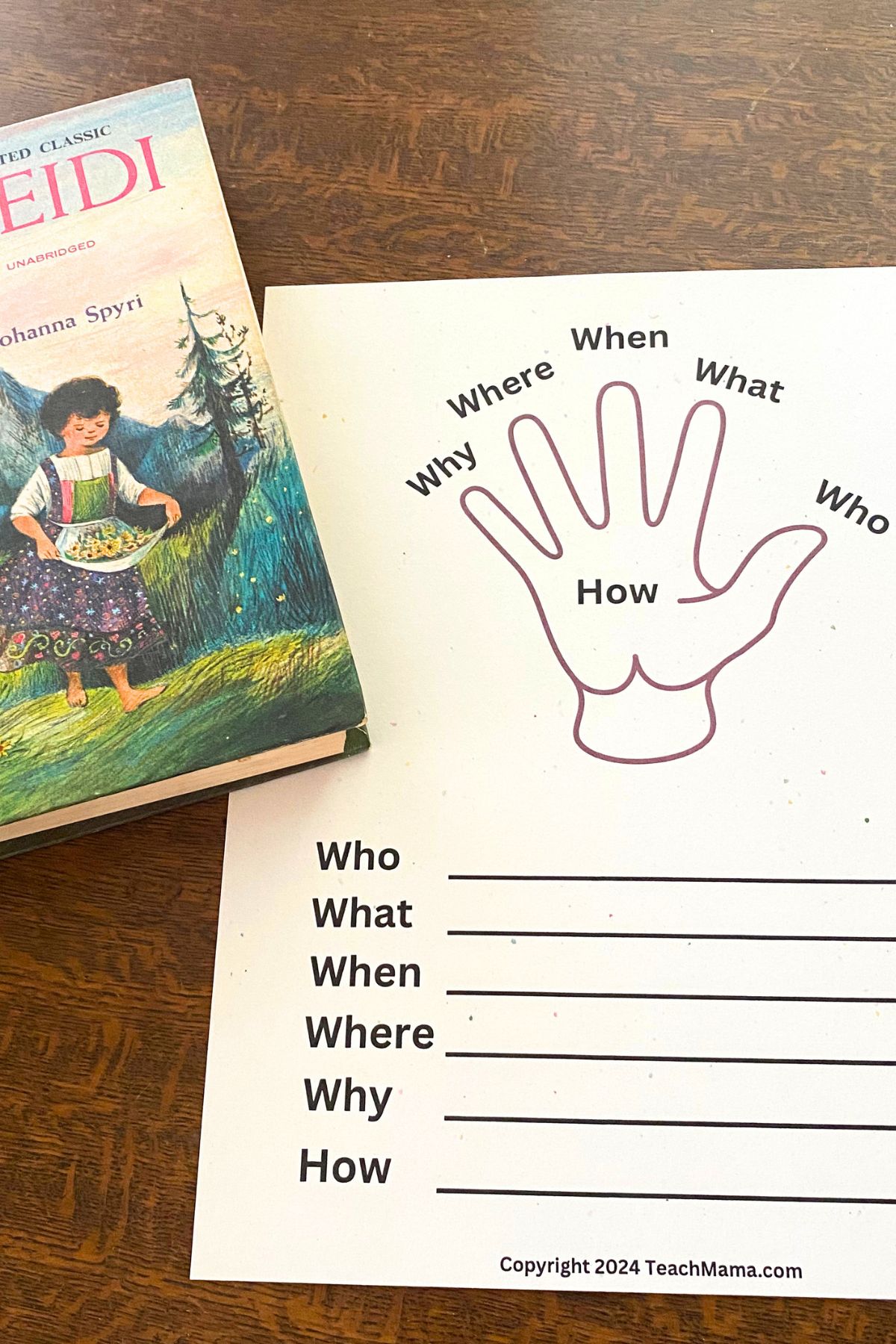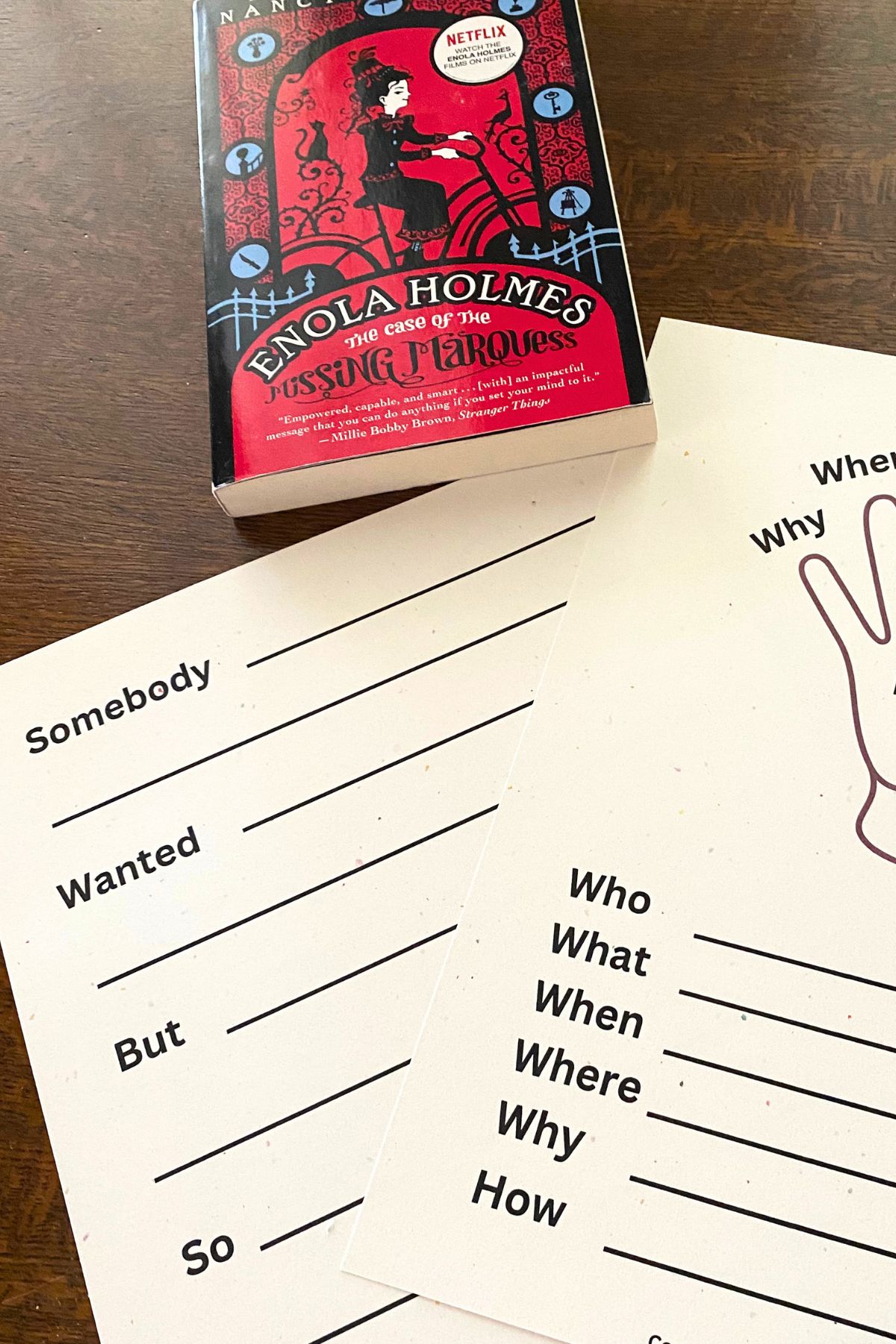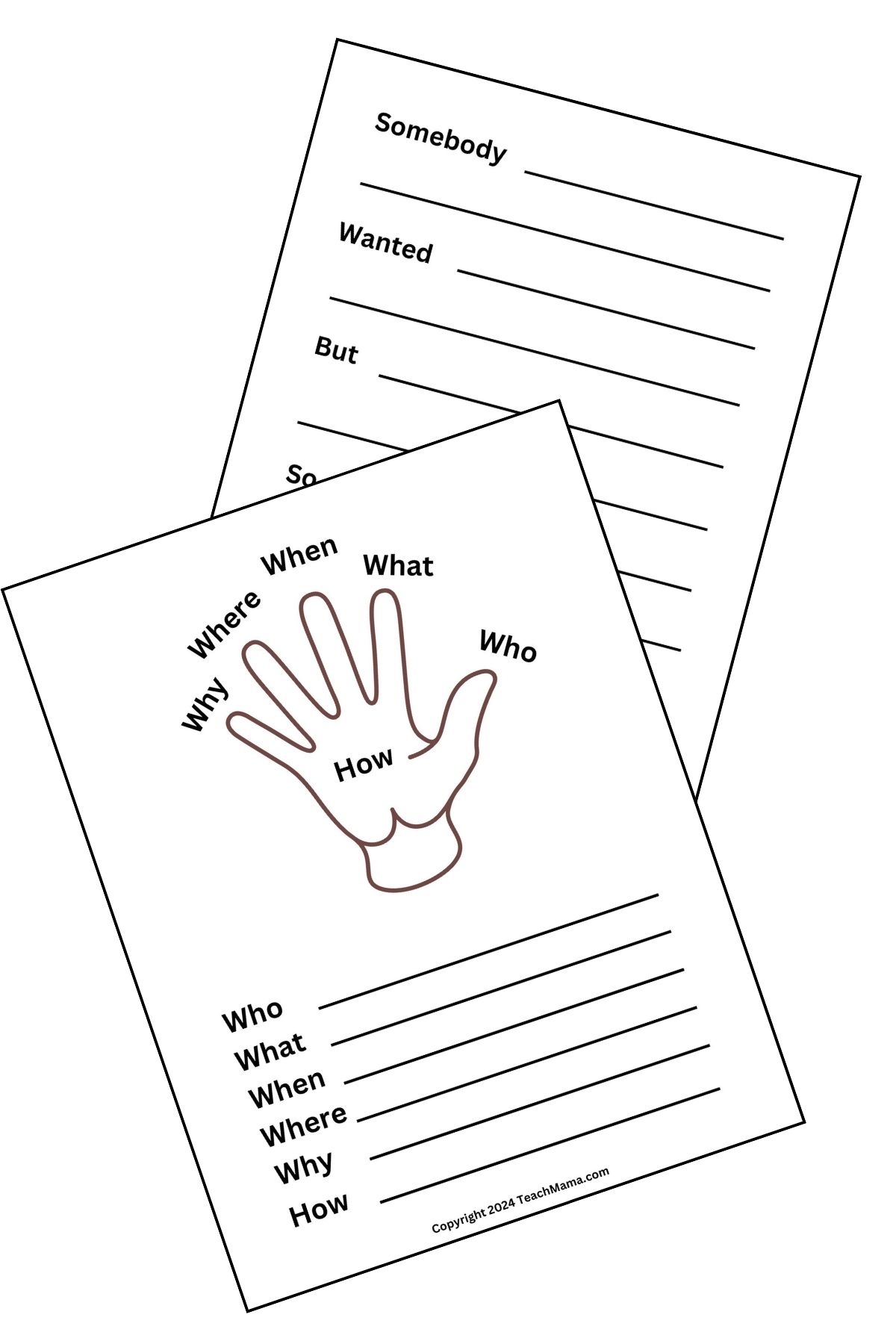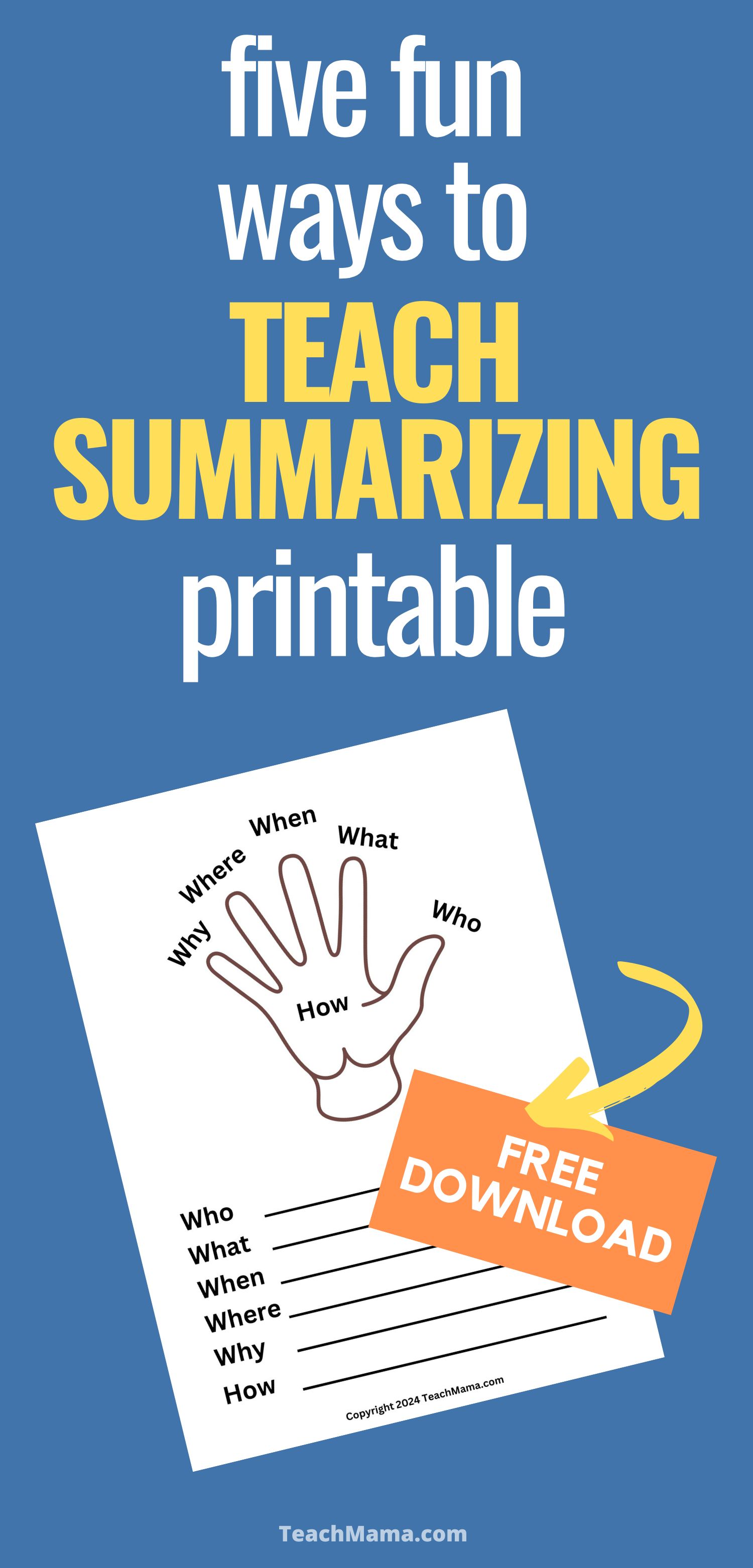Helping your child learn how to summarize will greatly increase their ability to sift through details in order to recognize and communicate the main idea of a text, chapter or whole book. All of which are important for understanding and remembering complicated texts, picking out supporting points and later for note taking and even outlining.

As I was talking to a policeman after a minor fender bender, the person who hit me (a very nice lady) kept going on and on about her morning and everything she had been doing prior to the crash. I could practically feel the officer rolling his eyes as he kept repeating, “Just the facts ma’am.” The ability to give “just the facts” is an important life skill that your kids will find useful well beyond school.
Summarizing: the Art of Telling What is MOST Important
Kids LOVE stories and love telling them in great detail. Perhaps that is why summarizing can be such a difficult concept for them to grasp. It goes against their love of story telling. Neil Gaiman compared summarizing to a map showing how to get to his house. A map with every blade of grass, every fire hydrant and neighbor ceases to be useful. But one with the major roads, the bus stop and a street address will have you knocking on his door in no time!
Sometimes kids will have a skill already but because it’s called something different they don’t connect it. Hashtags are a prime example of this. Kids understand a hashtag is the most relevant piece of information you want someone to remember. Because of that, if you can help them mentally connect hashtags to summarizing you may find the rest comes more easily.
What IS and what ISN’T a Summary
Put simply, a summary is telling in their own words the important parts of the author’s text in a logical order. What isn’t in a summary are their own personal feelings, thoughts or opinions. A summary just retells what the author had to say about the subject. The good news is that there are several ways summarizing is being taught today and easy fun ways to practice them at home.
Five Useful Ways to Summarize

Who-What-When-Why-Where-How
This is the classic method for summarizing. So a very brief summary of The Lord of the Rings might go something like this… The Brotherhood of the Ring (who) battles (what) their way through Middle-earth (where) on a quest to defeat Sauron (why) by destroying the last ring in fiery Mount Doom (how). You may notice that “when” isn’t included in the summary.
That is because we only include relevant facts in a summary and in this particular case when is not really relevant. Now in a story like The Diary of Anne Frank the when is very important and definitely would be included.
Now that you get the idea, you can begin practicing with their favorite stories. Make a game of it by giving them a summary and having them try to figure out what story it is. Then reverse it and have them give the summary for you to guess.
Somebody Wanted-But-So-Then
This method is closely related to the previous WWWWWH method of summary. Using this method Mary Poppins could be summarized as: Mr. Banks (somebody) wants a happy life (wants) but his children and wife are unhappy (but) so when the magical nanny, Mary Poppins,(so) takes charge of them then everything changes (then).
This way doesn’t include time, because although there is a time frame it isn’t relevant since this story could be set in any time period. Of course that summary is from Mr. Banks’ point of view. How would the summary change if it were from Mary Poppins’ point of view?
Hashtags
As I mentioned before, hashtags can be used in summarizing because kids are already comfortable using them. Use one of the methods and write a hashtag chain for the important elements of the story. It’s fun to write these down (without proper nouns) and let other kids or parents guess what the story is. for example: #wizard? #gotoschool #makefriends #make enemies #defeatbadguy
Maybe your child is older and has come home with a homework assignment requiring them to summarize something new and perhaps a little difficult for them. What then? When the reading is in their instructional reading level (meaning it’s a little harder than what they would or could read for fun) it might take just a little extra effort. Try Close Reading.

Close Reading
This is another terrific and easy technique for a child to learn so they can master more advanced texts. It involves several steps but is really pretty simple.
- First reading: teacher or parent shares with the student what they are looking for in the passage. For example, Why is Prometheus in trouble with the gods? Then the child highlights or marks the text on the first read through. Most schools frown on marking in their textbooks though so either make a copy or have them fill in one of the charts provided here directly from their reading
- Chatting and charting: talk with them about what was read and have them add to the chart anything they may have missed.
- Second reading: If the questions aren’t all answered then return to text to search for and answer text-dependent questions. This means the student isn’t coming up with their own answer. This is based solely on what the author has written.
- Chatting and charting: talk about what was read on the second reading and what new information was gleaned. Add that to the chart and write the summary from the information on the chart.
- Independence: as students practice this technique they can start doing it independently with increasing confidence.
Logical Order Card Sorting
Another fun activity you can use to reinforce the logical order part of summarizing is to write the elements on separate cards, shuffle them and have the child put them in order. They will quickly understand the importance of getting them in the right order if the story doesn’t make sense. Remember how kids love stories? Even a very young child will correct mom or dad if they mess up the order of their favorite bedtime story!
So…In “Summary”
Summarizing doesn’t always have to be about the printed word, but it is a retelling in logical order the bare facts of a story. A fun way to practice it is by creating a summary of any sitcom, movie or favorite cartoons they like. Let me tell you summarizing episodes of Sponge Bob Squarepants is a hoot!
Download these handy sheets to help your kids practice summarizing:

Even More Language Arts Fun!
- How to Make the Most of a Trip to the Library
- Wordless Riddles Lunchbox Notes
- Halloween Word Search Printable
PIN THIS FOR LATER


Interesting and useful advice on summarizing! I noticed that my daughter is great at summarizing when she is interested in the topic, but could be “barely there” when she is not. I love the assignment itself – quite challenging and creative!
This is wonderful! I always struggle to explain “close reading” because as a teacher, I just do it. This breaks it down into something I can show parents. I’m sending them your way, lol!
awwwwwwwwh thank you, my sweet friend! Means a TON!